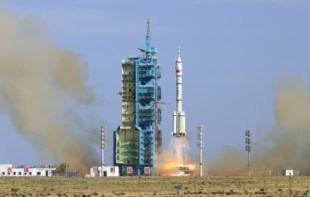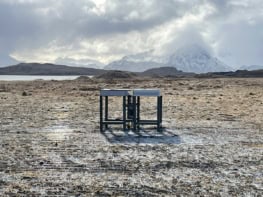Gravity Probe B - a satellite that will check two previously untested predictions of the general theory of relativity - was finally launched today. The $700 million experiment, which is a collaboration between NASA and Stanford University, has had a long and chequered history stretching back over 40 years. The satellite, which took off from Vanderburg Air Force Base in California, will orbit 640 kilometres above the Earth for the next 16 months.

In 1915, Einstein published his general theory of relativity, which showed that mass is caused by the curvature of space-time. The theory was able to explain features in the orbit of Mercury that Newtonian mechanics could not, and its prediction that light from distant stars would bend as it travelled past massive objects like the Sun was confirmed in 1921.
General relativity also predicted that massive bodies such as planets and stars would actually distort the fabric of space and time. This phenomenon – known as the geodetic effect – has already been tested by various experiments, but Gravity Probe B will be the most precise yet. However, Einstein predicted that such massive bodies would also “drag” space-time with them as they rotate. This so-called frame-dragging or Lense-Thirring effect is extremely small and has never been measured before.
Gravity Probe B will use superconducting quantum interference devices (SQUIDs) to measure tiny changes in the orientations of four perfectly-spherical, quartz gyroscopes as the experiment orbits the Earth. The gyroscopes are housed inside a vacuum chamber and will be maintained at 1.8 Kelvin using liquid helium. The probe also includes a telescope that will be trained on a distant “guide star” to provide a reference direction for measurements on the gyroscopes. General relativity predicts that the frame-dragging effect will cause the direction of the gyroscopes to change by a tiny 0.041 of an arc second.
Designing an experiment that can survive a rocket launch and still measure such a miniscule change of direction has posed enormous technical and financial challenges for the GP-B team. The launched has been delayed a number of times and the experiment has come close to being cancelled several times – most recently last year. The project has also gone $130 million over budget since 1999.



